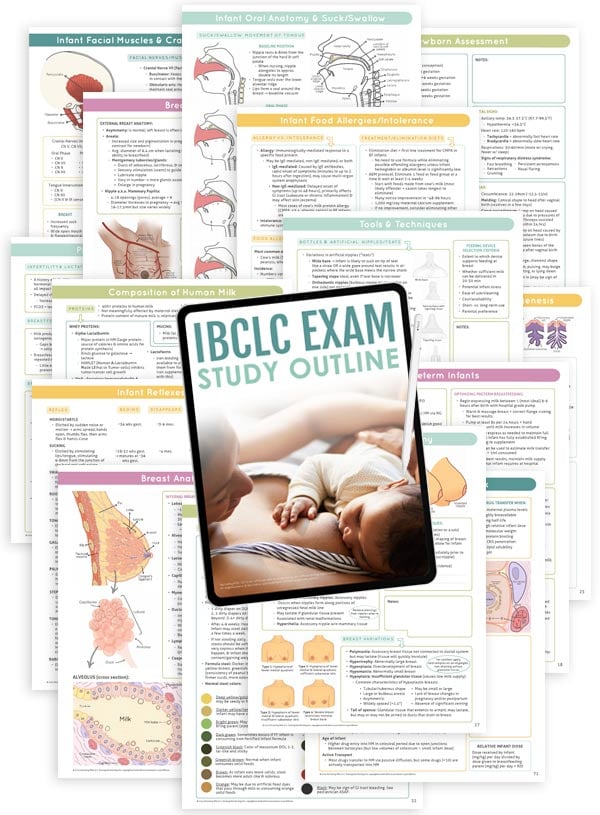
IBCLC Exam Study Outline
✓ Instantly download 88 pages of study material packed with content you need to know for the IBCLC exam
✓ Concise & condensed explanations in outline format
✓ Designated space to easily add your own notes on every page
✓ Organized sections that mirror the IBLCE Detailed Content Outline*
*Please note: Some material on the IBLCE's Detailed Content Outline (e.g. counseling skills, cultural competency, etc.) requires the application of knowledge/skills, so this study outline is NOT comprehensive. For more information, view the FAQ section at the bottom of this page. It is the buyer's responsibility to ensure they are familiar with all content on the IBLCE's Detailed Content Outline (found on their website).
The IBCLC Exam Study Outline is downloadable PDF file (no physical copy will be mailed to you) that includes 88 pages of info (plus a few extra blank pages for notes) on the following topics:
-Developmental milestones
-Breastfeeding habits & sleep
-Infant state & feeding cues
-Infant oral anatomy & suck/swallow tongue movements
-Infant facial muscles & cranial nerves
-Newborn assessment
-Preterm infants
-WHO Growth Charts
-Milk baking & donor milk
-Human milk substitutes
-WHO Code
-Infant stooling & voiding
-Internal & external breast anatomy
-Breast development & stages of lactogenesis
-Variations in breast anatomy
-Breast surgery
-Composition of human milk
-Milk synthesis & maternal nutrition
-Infant food allergies/intolerance
-Physiology of lactation (infertility, breastfeeding during pregnancy, breastfeeding multiples, tandem feeding, relactation & induced lactation, lactational amenorrhea)
-Hormones & lactation
-Maternal pathology (46 conditions)
-Maternal breast pathology (27+ conditions)
-Infant oral anomalies
-Infant pathology (51 conditions)
-Drug entry into human milk (including drug examples)
-Maternal mental health
-Selected psychology, sociology, & anthropology topics
-Birth & common birth practices
-Breastfeeding initiation
-Breastfeeding positions, infant-led latching, & asymmetric latch
-Managing milk supply
-Milk expression
-Lactation tools & techniques (e.g. tube feeding devices, cup feeding, etc.)
-Milk storage & handling
-Additional clinical skills/knowledge
-Statistics & research methods
